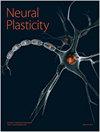A Controlled Clinical Study of Accelerated High-Dose Theta Burst Stimulation in Patients with Obsessive–Compulsive Disorder
IF 3.7
4区 医学
Q2 Medicine
引用次数: 0
Abstract
Background. Obsessive–compulsive disorder (OCD) is frequently treated using a combination of counseling, drugs, and, more recently various transcranial stimulation protocols, but all require several weeks to months for clinically significant improvement, so there is a need for treatments with faster onset. This study investigated whether an accelerated high-dose theta burst stimulation (ahTBS) protocol significantly improves the efficacy of OCD compared to traditional 1-Hz repetitive transcranial magnetic stimulation (rTMS) in the routine clinical setting. Method. Forty-five patients with OCD were randomized into two groups and treated with ahTBS or 1-Hz rTMS for 5 days. Patients were assessed at baseline at the end of treatment using the Yale–Brown Obsessive–Compulsive Scale (Y-BOCS). Results. After 5 days of treatment, there was a significant decrease in Y-BOCS scores in both groups (), and the difference between the two groups was not statistically significant (group × time interaction, F = 1.90, ). There was also no statistically significant difference in other secondary outcome indicators, including depression, anxiety symptoms, and response rate. However, the ahTBS group had a greater trend in response rate. Neuropsychological testing showed no negative cognitive side effects of either treatment. Conclusion. Accelerated high-dose TBS is as safe and has comparable short-term efficacy to traditional 1-Hz rTMS for the clinical treatment of OCD. Further research is needed to explore optimal ahTBS parameters, validate the utility of this treatment modality, and identify factors predictive of rapid clinical response to guide clinical decision-making. This trial is registered with NCT05221632.针对强迫症患者的加速大剂量θ脉冲刺激临床对照研究
背景。强迫症(OCD)通常采用心理咨询、药物和最近的各种经颅磁刺激方案相结合的方法进行治疗,但所有这些方法都需要数周至数月的时间才能取得明显的临床改善,因此需要起效更快的治疗方法。本研究调查了在常规临床环境中,与传统的 1 赫兹重复经颅磁刺激(rTMS)相比,加速高剂量θ爆发刺激(ahTBS)方案是否能显著提高强迫症的疗效。研究方法45名强迫症患者被随机分为两组,接受为期5天的ahTBS或1赫兹经颅磁刺激治疗。在治疗结束时使用耶鲁-布朗强迫症量表(Y-BOCS)对患者进行基线评估。治疗结果治疗5天后,两组患者的Y-BOCS评分均显著下降(),两组之间的差异无统计学意义(组别 × 时间交互作用,F = 1.90,)。其他次要结果指标,包括抑郁、焦虑症状和应答率,在统计学上也没有显著差异。不过,ahTBS 组的应答率呈上升趋势。神经心理学测试表明,两种治疗方法都没有对认知产生负面影响。结论在临床治疗强迫症方面,加速大剂量经颅磁刺激与传统的1赫兹经颅磁刺激同样安全,且短期疗效相当。还需要进一步的研究来探索最佳的 ahTBS 参数,验证这种治疗方式的效用,并确定预测快速临床反应的因素,以指导临床决策。该试验已注册为 NCT05221632。
本文章由计算机程序翻译,如有差异,请以英文原文为准。
求助全文
约1分钟内获得全文
求助全文
来源期刊

Neural Plasticity
Neuroscience-Neurology
CiteScore
5.70
自引率
0.00%
发文量
0
审稿时长
1 months
期刊介绍:
Neural Plasticity is an international, interdisciplinary journal dedicated to the publication of articles related to all aspects of neural plasticity, with special emphasis on its functional significance as reflected in behavior and in psychopathology. Neural Plasticity publishes research and review articles from the entire range of relevant disciplines, including basic neuroscience, behavioral neuroscience, cognitive neuroscience, biological psychology, and biological psychiatry.
 求助内容:
求助内容: 应助结果提醒方式:
应助结果提醒方式:


